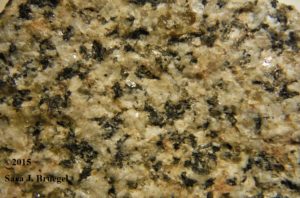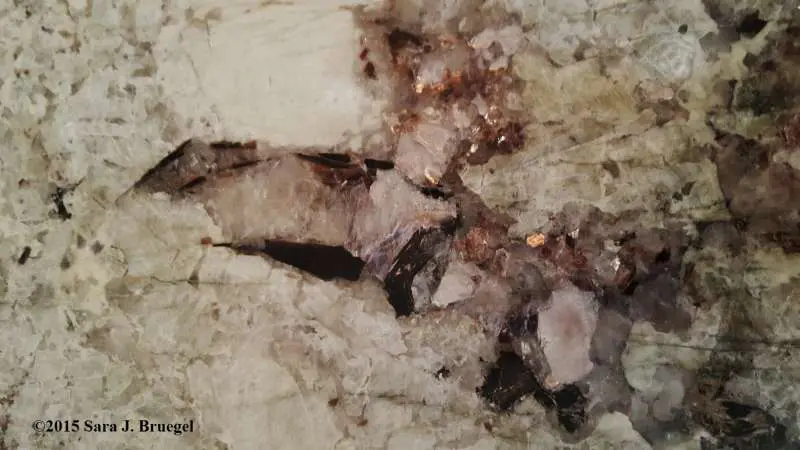
The bright morning sun glistened off the different colored rock crystals, all squeezed together into a block of granite rock. “Oh look! There’s schist, and I think that’s pegmatite!” I declared, delightedly leaning as close as I could to the jumble of shining rock on the other side of the railing. Mount Rushmore was great, but this nerdy rock-lover was more interested in the surrounding rocks than the actual carving of the presidents’ faces. The rocks were beautiful to look at, but how they got here today is an incredible story.
Some of the original rock here may have been made on creation week, when God first separated the waters, making land. That original rock was heated and squeezed by pressures that likely came from Earth’s moving plates near the beginning of the flood, transforming it into the shimmering rock, called schist. This was one of the rock types I saw below the presidents at Mount Rushmore. The other main type of rock I saw there was granite. Granite formed when underground magma (basically the same as lava, just underground) squeezed up into the schist rock that was already there and cooled into the hard rock that the presidents’ faces are carved out of at Rushmore.
If you look closely at George Washington and Abraham Lincoln, you will notice white streaks across their foreheads. Those streaks are made up of a special type of granite, called pegmatite. What makes pegmatite different from regular granite? Just the size of its crystal grains. If you’ve ever seen a granite counter top, polished smooth, you can tell that it’s made up of a bunch of tiny colorful mineral crystals. Pegmatite is the same, just made up of bigger mineral crystals. Some granite counter tops will also have a streak of bigger crystals (pegmatite) going through the regular smaller crystals.

Traditionally, geologists who wanted to believe that Earth is millions of years old would have said that the bigger the crystals, the more time it took to form. But, research has shown that large pegmatite crystals can form much quicker than expected because of water in the magma. Forming these pegmatite crystals is basically a cooling process, and water speeds up this process, helping it cool faster. In general, putting water on something hot (e.g., a pan or hard-boiled egg) will help it cool down faster because as the water evaporates, turning to steam, it will take away some of the heat-energy from the object. The same basic idea applies to pegmatite. Water mixed into the magma helps it cool faster than normal by taking some of the heat-energy and forming the big crystals of pegmatite granite that we can see as white streaks on two of the presidents’ foreheads at Mount Rushmore.
Pegmatite is not the only thing that cooled faster than normal because of water. There were giant blobs of magma, called “batholiths”, that cooled and hardened into granite like the rock the presidents are carved from at Rushmore. The presence of water would also help these giant underground heat chambers cool, but cracking from the fast cooling would also speed up their cooling. Pretty much all granites around the world are cracked, showing evidence of rapid cooling. In the end, it’s not about how much time you have, but about the chemistry and physics of what is happening. What’s so important about getting cool rock? It all points back to the global flood. Both at the time of original creation the flood and , water would have gotten trapped in magma, helping cool the magma into the granite rocks that we have today. You don’t need millions of years to make granite – you only need the right conditions.
Copyright Sara J. Bruegel, December 2016
Reference
- Geology Field Notes: Mount Rushmore National Park.Explore Geology. Nature & Science. National Park Service. U.S. Department of the Interior. Last accessed 12-2-16 http://www.nature.nps.gov/geology/parks/moru/
- Snelling, Andrew and Woodmorappe, John. Rapid Rocks: Granites … They Didn’t Need Millions of Years of Cooling. December 1, 1998. Originally published in Creation 21, no 1 (December 1998): 42-44. Answers in Genesis. Last accessed 12-2-16 https://answersingenesis.org/geology/geologic-time-scale/rapid-rocks/
- Marshark, Stephen. Earth: Portrait of a Planet. , Third Edition. 2008. W. W. Norton & Company, Inc. Page 168-9.





